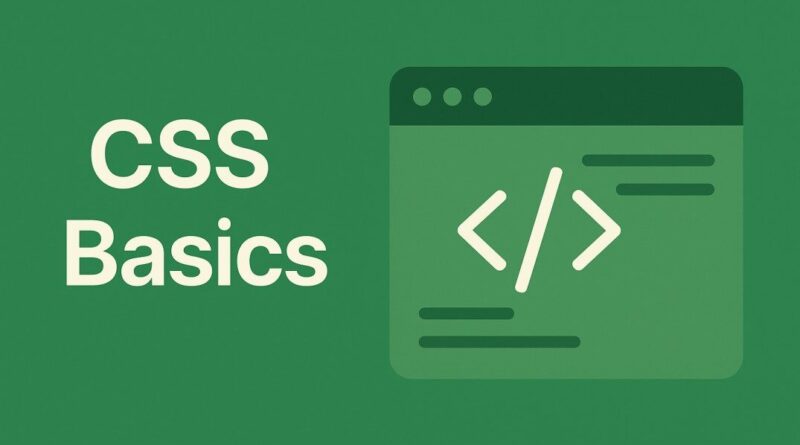CSS – Unleashing the Power of CSS Shorthand: Streamline Your Styles!
Unleashing the Power of CSS Shorthand: Streamline Your Styles!
Hey there, fellow web creators and design enthusiasts! Ever found yourself writing lines and lines of CSS, feeling like you’re repeating yourself? What if I told you there’s a secret weapon in your CSS arsenal that can significantly reduce your code, make it more readable, and even boost your development speed? Enter CSS Shorthand Properties!
In the vast and exciting world of web development, efficiency is key. And when it comes to styling, CSS shorthand properties are your best friends. They’re not just a clever trick; they’re a fundamental best practice that every aspiring and seasoned developer should master.
So, what exactly are CSS Shorthand Properties?
Think of them as super-condensed versions of individual CSS properties. Instead of declaring each aspect of a style individually, shorthand properties allow you to combine multiple related properties into a single, powerful declaration. It’s like ordering a combo meal instead of separate dishes – you get everything you need in one go!
Let’s dive into some of the most common and incredibly useful shorthand properties:
1. The Marvel of margin and padding: Spacing Made Simple!
You know how crucial margin and padding are for creating beautiful layouts and ensuring proper spacing around your elements. Traditionally, you might write:
CSS
.my-element {
margin-top: 10px;
margin-right: 20px;
margin-bottom: 15px;
margin-left: 5px;
}
And similarly for padding. But with shorthand, it’s a game-changer!
CSS
.my-element {
margin: 10px 20px 15px 5px; /* Top, Right, Bottom, Left */
}
Even better, you have options!
margin: 10px;(Applies 10px to all four sides)margin: 10px 20px;(Applies 10px to top/bottom, 20px to left/right)margin: 10px 20px 30px;(Applies 10px to top, 20px to left/right, 30px to bottom)
Isn’t that incredibly neat? This applies identically to padding as well!
2. The Brilliance of background: Crafting Stunning Visuals
The background property is a powerhouse for adding colors, images, and various effects to your elements. Individually, you’d be looking at:
CSS
.my-hero {
background-color: #f0f0f0;
background-image: url('hero-image.jpg');
background-repeat: no-repeat;
background-position: center center;
background-size: cover;
}
With shorthand, prepare to be amazed:
CSS
.my-hero {
background: #f0f0f0 url('hero-image.jpg') no-repeat center center / cover;
}
This single line concisely defines the background color, image, repeat behavior, position, and size! Talk about efficiency!
3. The Beauty of border: Defining Your Edges with Ease
Borders add structure and visual separation to your design. Instead of:
CSS
.my-card {
border-width: 2px;
border-style: solid;
border-color: #3498db;
}
You can elegantly write:
CSS
.my-card {
border: 2px solid #3498db;
}
Simple, clean, and effective!
4. The Flexibility of font: Typography at Your Fingertips
Controlling your typography is crucial for readability and aesthetics. Imagine defining individual font properties:
CSS
h1 {
font-style: italic;
font-variant: small-caps;
font-weight: bold;
font-size: 2.5em;
line-height: 1.2;
font-family: 'Open Sans', sans-serif;
}
Now, behold the shorthand magic:
CSS
h1 {
font: italic small-caps bold 2.5em/1.2 'Open Sans', sans-serif;
}
While this one can look a bit more complex initially due to the sheer number of properties it combines, once you grasp the order (font-style, font-variant, font-weight, font-size/line-height, font-family), it becomes an incredibly powerful tool for compact font declarations.
Why Embrace CSS Shorthand Properties? The Undeniable Benefits!
- Cleaner, More Readable Code: Less clutter means easier understanding for you and anyone else working on your project.
- Reduced File Size: Fewer lines of code translate to smaller CSS files, leading to faster page load times for your users. Every kilobyte counts for a snappy user experience!
- Faster Development: Writing less code means you can style elements and build interfaces more quickly.
- Maintainability: Easier to spot and fix issues when your code is concise and well-organized.
- Professionalism: Using shorthand properties demonstrates a strong understanding of CSS best practices, making your code look more professional and efficient.
A Word of Caution (But Don’t Be Afraid!):
While shorthand properties are fantastic, remember that they set all the sub-properties. If you only want to change one specific aspect (e.g., just the border-color), it might be clearer to use the individual longhand property. It’s all about context and choosing the right tool for the job!
Ready to Level Up Your CSS Game?
Start incorporating these shorthand properties into your daily coding routine. You’ll be amazed at how much cleaner, faster, and more enjoyable your CSS development becomes. These advanced CSS concepts aren’t just for experts; they’re accessible and incredibly beneficial for everyone.
By mastering shorthand properties, you’re not just writing less code; you’re writing smarter code. So go forth, optimize your stylesheets, and craft stunning web experiences with newfound efficiency!
What are your favorite CSS shorthand properties? Share your thoughts and tips in the comments below! Let’s keep the conversation going and help each other grow in our web development journey!




